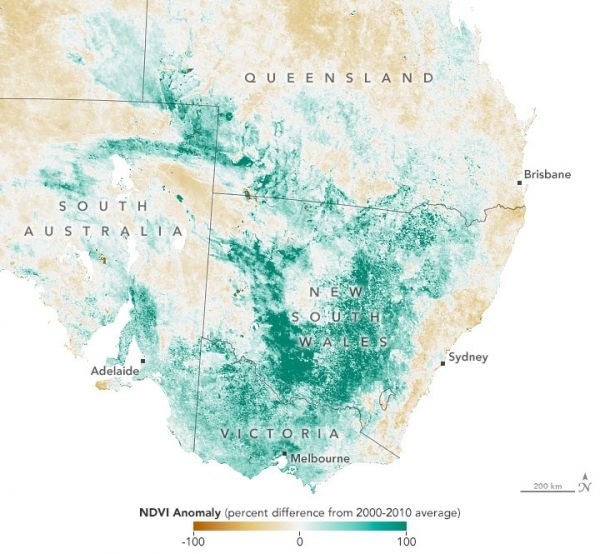As the 2019–2020 summer brought record heat to Australia, New South Wales appeared to be heading into its third year of severe drought. From January 2017 through October 2019, the southeast Australian state experienced its lowest amount of rainfall in nearly a century. During that time, farmlands were parched, lakes dried up, and millions of fish died.
After more than 34 consecutive months of dry conditions, steady and occasionally heavy rain finally arrived in New South Wales. From January to May 2020, southeastern Australia received above-average rainfall and even broke records in Victoria. According to the Australian Bureau of Meteorology (BOM), April and May 2020 was the first period since 2016 with close to average rainfall in New South Wales and the Murray–Darling Basin. The BOM predicts the upcoming winter (June to August) will also be wetter than average for western New South Wales and parts of South Australia.
The natural-color images above show the greening of the landscape in southeastern Australia in June 2020 (right) compared to May 2018 (left). The images were acquired by the Moderate Resolution Imaging Spectroradiometer (MODIS) on NASA’s Aqua satellite.
Continue reading at NASA Earth Observatory
Image via NASA Earth Observatory


